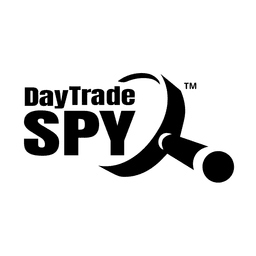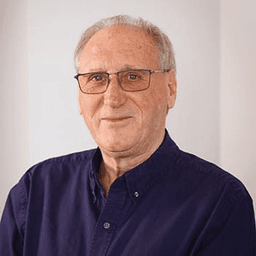How Hugh Grossman Sold DayTradeSPY for 7 Figures After Turning Losses Into a Financial Win


Business Description
Table of Contents
Navigate through the case study sections
Executive Summary
Case Study Content
From Financial Loss to Control: How Hugh Grossman Got His Start
Hugh Grossman’s journey didn’t begin with triumph. Instead, it started with shock. Climbing the corporate ladder as an internal auditor at a Fortune 500 insurance firm, Hugh had been letting a financial advisor manage his retirement savings, never bothering to dig into those regular statements. Until one day, combing through unopened mail, he found that half his nest egg had vanished. Rough phone calls followed. Anger, disbelief, and then clarity. Nobody, Hugh realized, will ever look after your money like you can yourself. And suddenly, he wasn’t content with being a passive investor any longer.
That spark set him off, a deep dive into online courses, webinars, late-night articles, and self-training on the mechanics of the stock market. Slowly, through trial, error, and persistence, he made his own strategies. Before long, he began to recover, and even outpace, his original investments. But Hugh’s rebirth as an active trader didn’t stay private for long. Friends and colleagues noticed the turnaround and pressed him for tips. Their curiosity pushed him to start teaching, which, in time, led to the foundation of DayTradeSPY.
Scaling DayTradeSPY: From Kitchen Table to Thousands of Subscribers
DayTradeSPY started as a small, members-only circle, Hugh would send out his morning trades, chat with the group online afterward, and run a low-key weekly meetup about the state of the market. Subscribers, many of whom came from high-profile backgrounds like NFL athletes, doctors, and even mayors, paid a monthly fee ($60-70) for access to his unfiltered, in-the-trenches guidance. Word spread. Requests soon followed for more: live chat trading rooms, downloadable e-books, video tutorials. Hugh kept building. Eventually, his product suite included a robust, multi-part webinar series and weekly free web classes that kept newcomers and veterans engaged alike. The real trick? Daily, actionable content that made every member feel directly involved and valued.
Growth snowballed, but Hugh kept things tight-knit. Family played an essential role: his son ran sessions in Hugh’s absence, while his wife and daughter tackled marketing. This small but mighty team projected the reliability of a much bigger operation, helping reinforce the DayTradeSPY brand as both accessible and expert. Engagement stayed high. Retention rates remained steady, and subscribers rarely lined up for the exit. Hugh didn't just sell trades, he built community.
Inflection Point: The Decision to Sell and the Flippa Connection
Running DayTradeSPY consumed more than a decade. While Hugh initially saw it as a quick gig to replace lost investments, twelve and a half years later he was still at the helm, guiding tens of thousands of trades for a loyal army of customers. The plan was never to exit, it hardly even seemed possible. Who would buy a personal brand business? But curiosity got the better of Hugh when he received an email from Flippa. He set up a call, expecting nothing. Then the broker, Fiona, shared a valuation that stopped him cold. Was it for real?
Soon, Fiona found a buyer with an uncanny fit. They wanted to add an options trading division to their publishing business, and DayTradeSPY ticked every box. The offer was above Hugh’s wildest dreams. The deal closed rapidly, leaving Hugh equal parts amazed and grateful. He was praised not just for profits and growth, but for customer loyalty, a rare commodity in the world of online trading communities.
Financials, Subscribers, and What Made DayTradeSPY So Valuable
When DayTradeSPY sold, it was generating approximately $29,000 per month in profit, with a total subscriber list of 14,000, most of them highly engaged, some sticking around for a decade or more. Even more impressive: the business ran at a 94% profit margin, an almost unheard-of figure for content and education offerings. Scalability wasn’t just theoretical, it was demonstrated year after year as the subscriber base grew without pouring cash into paid traffic or advertising. Consistent, unique daily content kept retention high and churn low.
Transitioning Leadership: Easing Customers Into Change
With many subscribers relying on Hugh’s personal touch for years, the transition required delicacy. Rather than abruptly stepping back, Hugh gradually transferred teaching duties to the new team, sometimes even lining up side-by-side training webinars. Some customers were emotional, even in tears, worried they’d lose the character of the service. Hugh reassured them, staying actively involved longer than intended and mentoring the incoming leader. This pragmatic, empathetic approach helped prevent churn and kept community trust intact throughout the transition.
Lessons Learned and Advice for Other Entrepreneurs
Hugh’s big takeaway? Even if you don’t plan to sell, keep an open mind. Opportunities may appear by surprise and when they do, be ready with your numbers, systems, and customer base strong. He credits much of his success to daily consistency, making sure every subscriber got value, no matter how big or small the business grew. “Sell when you’re at your peak, ” he says. “You might be shocked at what’s possible.”
Hugh also singles out the right broker as critical. Smooth dealmaking didn’t just happen for him, he chose experts who understood online business and managed the emotional rollercoaster of selling something so personal. Today, Hugh is already on the lookout for new projects to buy, build, and sell.
Conclusion: Key Takeaways from DayTradeSPY’s Journey
- Empower customers through transparency, real-time guidance and actionable value, retention and scaling become much easier.
- Lean on family, or a small, focused team, for day-to-day roles that reinforce the sense of reliability and community.
- Don’t assume you can’t sell a “personal brand” business. Buyers often care more about systems, retention, and recurring revenue than you expect.
- When transitioning out, stay hands-on to protect hard-won loyalty. Gradual transitions help keep users onboard.
- Always be open to new opportunities. A simple email inquiry led to a life-changing deal.
- Know your numbers, margins, and core value drivers. High profit margins and recurring revenue are magnets for acquirers.
Business Plan
Market Problem
Many individuals struggle with effective investment strategies, often relying on financial advisors who may not prioritize their best…
See the full market problemSolution
DayTradeSPY addresses these issues by offering a hands-on, community-focused educational platform for options trading. The business…
See the full solutionTarget Market
Beginner Traders
Individuals new to trading who seek guidance and support to navigate the complexities of options trading.
Recovering Investors
Those who have experienced losses and are looking for a fresh start and effective strategies to regain their confidence.
Competitors
Investopedia
Offers a wide range of educational content but lacks personalized, community-driven support.
Warrior Trading
Provides trading courses but often focuses on high-pressure sales tactics rather than building relationships.
Competitive Advantage
The unique blend of personal experience and community involvement sets DayTradeSPY apart from competitors. Hugh's journey from loss to…
See the full competitive advantageSales and Marketing
DayTradeSPY can utilize a mix of content marketing and social media engagement to attract new subscribers. Creating targeted ads on…
See the full Sales and marketing planSuccess Milestones
Launch Website
Develop an engaging website that showcases services, success stories, and content.
Build Subscriber Base
Aim for 500 subscribers through targeted marketing and community events.
Key Takeaways
- 1Rebuilding after heavy losses, Hugh Grossman learned to manage his own finances and built a business on sharing real-world experience.
- 2DayTradeSPY grew organically through word of mouth and a strong community, leading to high retention and subscriber engagement.
- 3Family involvement was key, from running live trading rooms to handling marketing, helping keep operations lean and personal.
- 4A seven-figure sale was achieved by optimizing for high profit margins, recurring revenue, and deeply engaged subscribers.
- 5A smooth business transition was managed by gradually handing over teaching duties and keeping communication open with customers.
- 6Hugh proved that even founder-driven, personal brand businesses can attract serious buyers if the fundamentals and systems are strong.
Key Facts
Tools & Technologies Used
Premium Content Locked
Subscribe to access the tools and technologies used in this case study.
Unlock NowHow to Replicate This Success
Premium Content Locked
Subscribe to access the step-by-step replication guide for this case study.
Unlock NowInterested in Being Featured?
Share your success story with our community of entrepreneurs.
Explore More Case Studies
Discover other inspiring business success stories

From Plumber to Acquisition Entrepreneur: Jaryd Krause’s Journey
Jaryd Krause began as a part-time plumber with a travel blog dream, then pivoted to buying existing online businesses. W...
BuyingOnlineBusinesses

How JustBeepIt Skyrocketed to $35,000 with Organic Traffic
JustBeepIt launched with zero marketing spend and climbed to $35,000 in sales by harnessing free channels: Product Hunt,...
JustBeepIt

From $0 to $5K MRR: How Two Engineers Built UseDouble and Pivoted to Double.bot
Engineers Gonzalo Espinoza Graham and Wesley Yue built a spreadsheet-powered lead gen tool in late 2022 that quickly pul...
Double.bot
